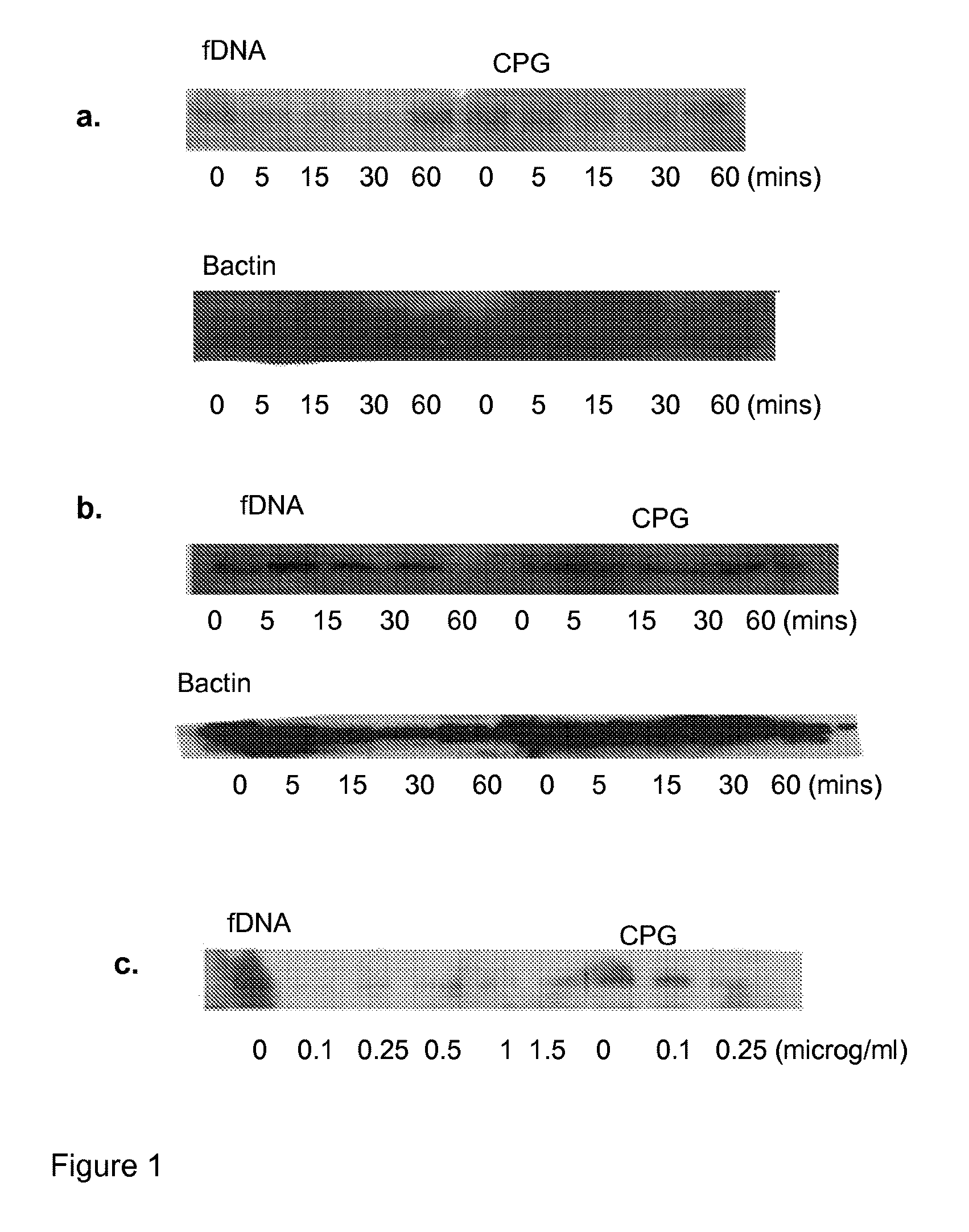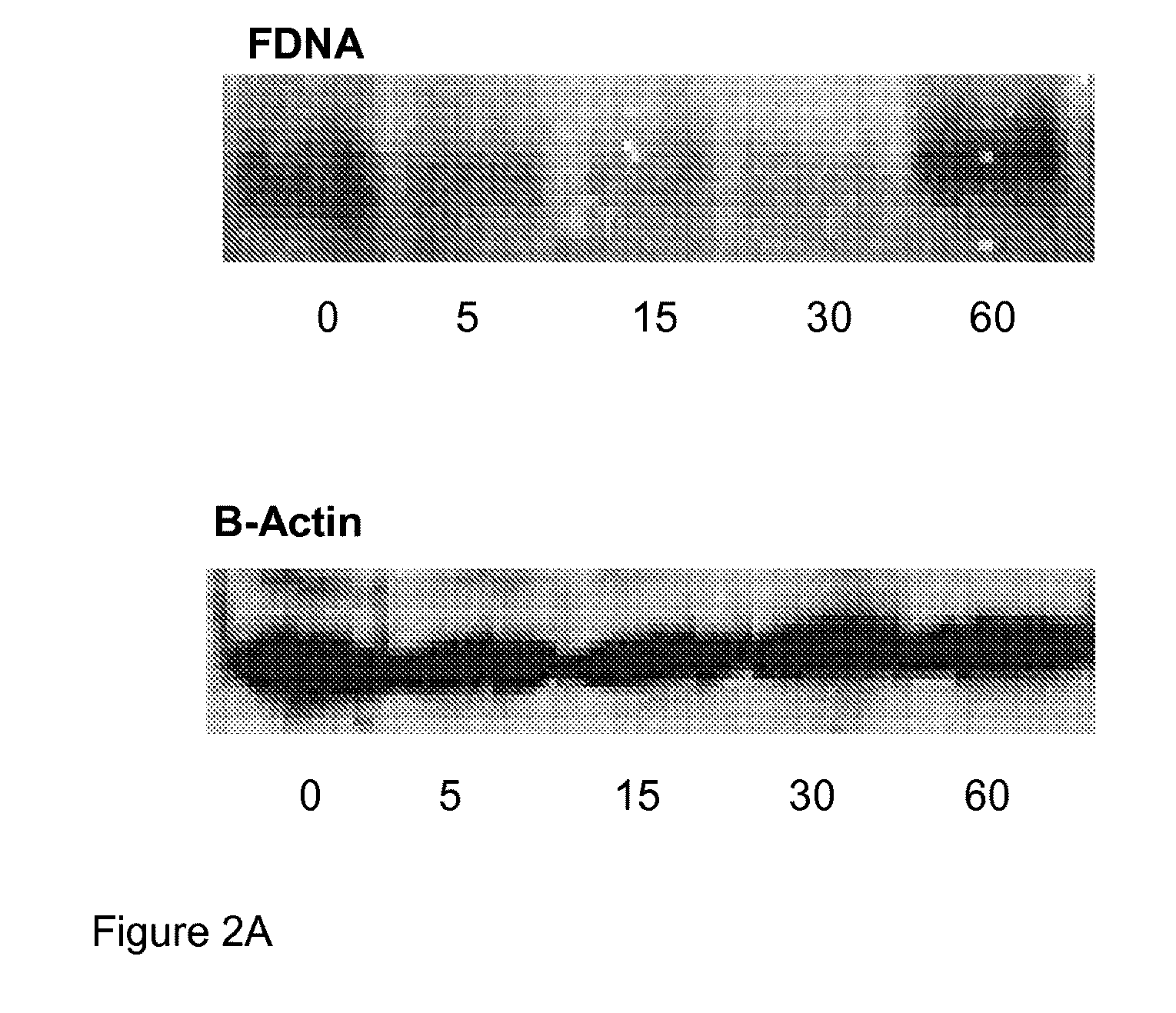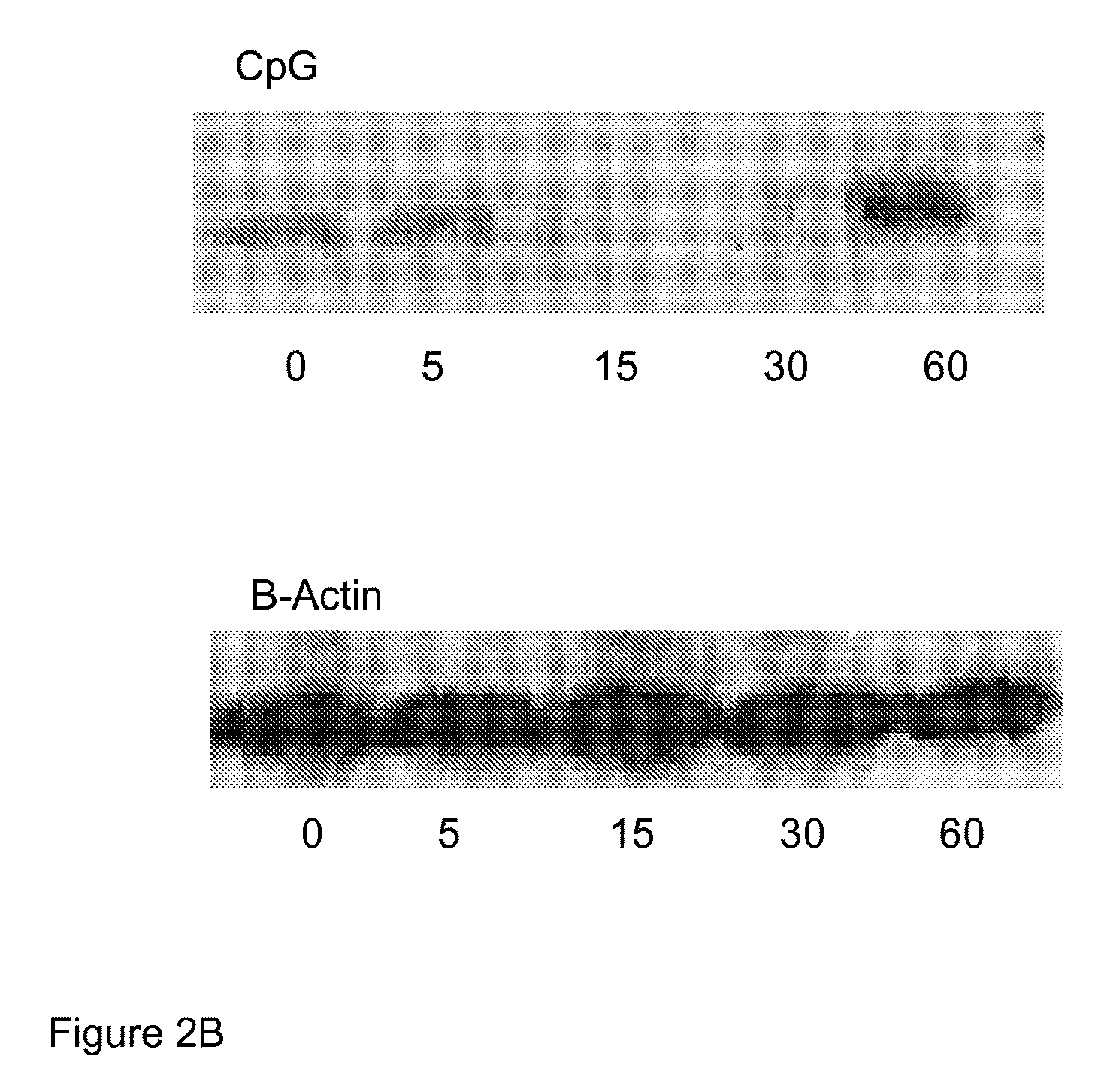Treatment of preterm labor with toll-like receptor 9 antagonists
a toll-like receptor and preterm labor technology, applied in the field of compositions and methods, can solve the problems of poor nutritional status, preterm delivery may occur, stagnant preterm delivery rate, etc., and achieve the effect of reducing the amount of fetal dna ligands, reducing the binding and activation, and suppressing the function of toll-like receptor 9
- Summary
- Abstract
- Description
- Claims
- Application Information
AI Technical Summary
Benefits of technology
Problems solved by technology
Method used
Image
Examples
example 1
Fetal DNA Induces I-kappa-B Degradation and p38 Phosphorylation
[0197]Namalwa B cells were exposed to fetal DNA. This example assesses whether fetal DNA induces I-kappa-B degradation and p38 phosphorylation in Namalwa B cells in response to exposure of that TLR9 expressing cell line to fetal DNA, and compares any activation to that induced by exposure of the Namalwa B cells to activation with the TLR9 agonist CpG DNA.
Methods
[0198]Namalwa cells, a B-cell line isolated from Burkitt's lymphoma obtained from a 3 year old African female, which have been documented to express TLR-9, were used for the initial studies. Namalwa cells were cultured at a concentration of 2.0×106 cells / ml. The cells were first tested for the presence of TLR-9 in the supernatant and immunoblotted for TLR-9. Namalwa cells, which are a B-cell line from Burkitts lymphoma, were chosen as a model cell line since these cells demonstrate a high level of TLR-9 expression.
[0199]For the time course studies, Namalwa cells c...
example 2
Fetal DNA and the Toll-Like Receptor 9 Agonist CpG DNA Mediate 1-Kappa-B degradation
[0204]Namalwa B cells as described in Example 1 were exposed to fetal DNA (FDNA) (FIG. 2A), a TLR9 agonist CpG (FIG. 2B) and adult DNA (FIG. 2C). It is shown that fetal DNA induces IkB (I-kappa-B) degradation in Namalwa B cells (FIG. 2A).
[0205]Specifically, Namalwa cells at a concentration of 2.0×107 cells / ml were stimulated for various times (in minutes) with fetal DNA (fDNA, FDNA) at a concentration of 3 μg / ml, a CpG containing DNA oligonucleotide (CpG) (3 μg / ml) or adult DNA (3 μg / ml). IkB (I-kappa-B) degradation was measured by immunoblotting.
Results
[0206]Both fetal DNA and CpG DNA, but not adult DNA concentration induced I-kappa-B degradation. Hence, it can be concluded that both fetal DNA and the TLR9 agonist CpG DNA activate Toll-like Receptor 9, but that adult DNA does not act as a Toll-like Receptor 9 agonist.
example 3
Fetal DNA and the Toll-like Receptor 9 Agonist CpG DNA Mediate I-kappa-B Degradation in PBMCs
[0207]Confirmation of the findings of Examples 1 and 2 was sought by assessing IkB degradation in a peripheral blood mononuclear cell (PBMC) model.
[0208]PBMCs from female donors were set up at a concentration of 2.5×106 cells / ml and incubated for 24 hours. They were then stimulated with fetal DNA, adult DNA and human CpG (a TLR9 agonist) at a concentration of 1.5 μg / ml, at various times in accordance with the method used in Examples 1 and 2 in respect of stimulating the Namalwa cells. IκB degradation was measured by immunoblotting. Beta actin was used as a control.
[0209]Measurement of the cytokine IL-6 induction was also performed in the PBMC population as described above.
Results
[0210]FIG. 3 shows that fetal DNA induces I-kappaB degradation in peripheral blood mononuclear cells (PBMCs). FIG. 3A shows that PBMCs stimulated with fetal DNA led to IkB degradation. FIG. 3B shows that stimulation ...
PUM
| Property | Measurement | Unit |
|---|---|---|
| concentration | aaaaa | aaaaa |
| concentration | aaaaa | aaaaa |
| concentration | aaaaa | aaaaa |
Abstract
Description
Claims
Application Information
 Login to View More
Login to View More - R&D
- Intellectual Property
- Life Sciences
- Materials
- Tech Scout
- Unparalleled Data Quality
- Higher Quality Content
- 60% Fewer Hallucinations
Browse by: Latest US Patents, China's latest patents, Technical Efficacy Thesaurus, Application Domain, Technology Topic, Popular Technical Reports.
© 2025 PatSnap. All rights reserved.Legal|Privacy policy|Modern Slavery Act Transparency Statement|Sitemap|About US| Contact US: help@patsnap.com



